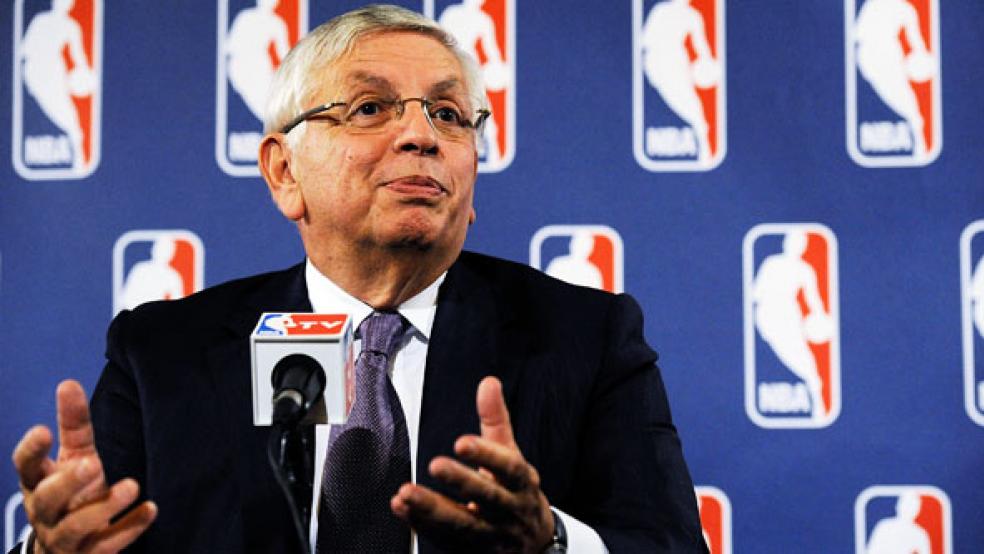On Monday morning National Basketball Association Commissioner David Stern cancelled the first two weeks of the regular pro-basketball season – and both owners and players are estimating losses in the hundreds of millions of dollars. Here’s a look at the NBA’s labor impasse and where it’s headed:
Q: With the first two weeks of the season are cancelled, what happens next?
A: No meetings are currently scheduled, and Stern warned that more games could be lost with each passing day.
Q: What were the NBA’s revenues last season?
A: The league brought in about $4.3 billion, of which $3.8 billion fell into the category of basketball-related income . BRI is basically all the money made through basketball operations, including gate receipts, broadcast revenues, in-arena sales of novelties and concessions, arena signage revenues, game parking and program revenues, sponsorship revenues, etc.
Q: So what’s the problem?
A: Players were guaranteed 57 percent of BRI, and the league says owners were destined to lose money when they only kept 43 cents of every dollar.
Q: How bad was it for owners?
A: They say they lost $300 million last season, after losing hundreds of millions in every year of the previous collective bargaining agreement that was ratified in 2005. The league says 22 of its 30 teams lost money, including losses of $20 million or more for 11 of them.
Q: Couldn’t they avoid those problems if the teams that made money shared more with the others?
A: That’s what the players say, calling the NBA’s revenue-sharing program “insignificant.” The league says a more robust revenue-sharing plan is coming, but not until after a new CBA with the players, because right now all it would be doing is sharing losses.
Q: What do the owners want?
A: The league has two goals in the negotiations: A system that would guarantee owners a chance to make a profit, and a system where all teams would have a chance to compete equally for a championship.
Q: How far apart are they financially?
A: Each side’s last formal proposal was a 53-47 revenue split in its favor. Given each full BRI percentage point was worth nearly $40 million last season, the sides are officially around $240 million apart in the first year of a deal.
Q: Why is competitive balance a problem now?
A: Because the NBA’s “soft” salary cap system allows teams to spend above it by using various exceptions. There is a luxury tax level in which teams have to pay a $1 tax for every $1 they exceed the threshold, but big-market teams simply absorbed the penalty that smaller-market clubs were unable to. So the league says small-market teams can’t compete in the NBA like they do in the NFL, where Green Bay, Indianapolis, New Orleans, and Pittsburgh have won recent Super Bowls.
Q: What do players think about a hard cap?
A: They’re completely opposed: union executive director Billy Hunter has called it a “blood issue.” Players believe a hard cap would eliminate fully guaranteed contracts for all but a handful of top players and set up a system like the NFL, where teams cut even high-performing players for cap reasons and aren't required to pay their full contracts.
Q: Is playing overseas a viable option?
A: Not as good as the players hoped, which is why Stern downplayed it as a bargaining threat from the start. Economic difficulties in Europe mean teams there simply can’t pay enough to entice NBA stars, and China essentially removed itself as an option when it ruled its teams couldn’t offer contracts with opt-out clauses, meaning players who sign there are required to stay all season.
Q: Can they still play a full 82-game season?
A: Stern said everything is negotiable, but it will be difficult. Arenas have few dates available and already have been told they can book events on nights games were scheduled for the first two weeks of the season.
Copyright 2011 The Associated Press.


